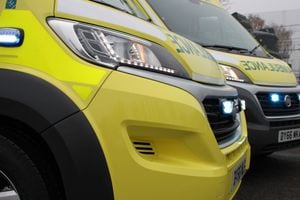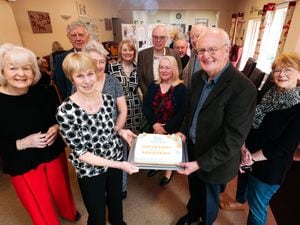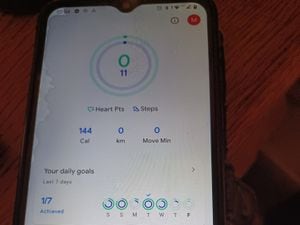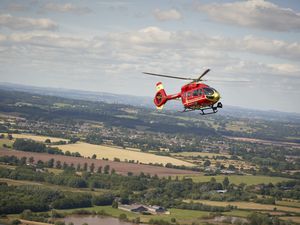One in 10 Shropshire A&E patients face ambulance handover delays of more than an hour
Hospital bosses say demand on Shropshire's A&E services is continuing to rise – as it was revealed one in 10 patients were left waiting in ambulances for more than an hour during the past two months.

NHS Digital data shows there has also been a huge rise this winter in the number of patients waiting more than half-an-hour to be handed over at Royal Shrewsbury Hospital and Princess Royal Hospital in Telford.
Ambulances took 7,710 patients to the county's emergency departments between December 3 and February 3.
One in 10 people – 718 in all – waited for more than an hour in ambulances, which included 37 patients in a single day when the backlog was at its most severe.
The data shows a further 2,156 arrivals waited between 30 and 60 minutes before they were admitted.
During the same period last winter, 1,560 patients waited in ambulances for 30 minutes or more.
NHS bosses have stressed that A&Es should always accept handover of patients within 15 minutes of arrival by ambulance.
Hospital bosses say they are continuing to see a rise in demand for A&E services, but work is being done to improve performance.
Nigel Lee, chief operating officer at The Shrewsbury and Telford Hospital NHS Trust (Sath), which runs PRH and RSH, said: “Compared with the same two-month period last year, this winter we have seen overall A&E attendance increase by more than 2,700 patients and the number of patients arriving by ambulance increase by around 1,100, over 15 per cent more than the same time last year.
"At the same time, the number of people seen in our A&E who then needed admitting into hospital for further treatment rose by more than 1,100."
He said it underlines the need for a long-term solution, adding: "By separating emergency care – for the most part those coming to hospital in a blue-light ambulance – from urgent care – things like a broken arm or a cut that needed stitches – we will be able to see people much more quickly and much more effectively.”
Shortest
About a third of patients arrive at the county’s A&Es in ambulances.
West Midlands Ambulance Service says it works closely with Sath and forecasts the number of patients it expects to bring in.
It was also recently revealed that plans are in the pipeline for ambulances to be taken to hospitals with the shortest waiting times, rather than the nearest geographically, in a bid to reduce handover times.
Unison says delays risk the safety of patients and are "a terrible waste" of ambulance crews' skills.
Colm Porter, Unison's national ambulance officer, said: "Handover delays are a stark illustration of the extreme pressure on the NHS caused by years of chronic underfunding.
"Not only are patients put at risk with lengthy waits to get into A&E, but there are also fewer ambulances available to respond to emergencies.
"Ambulance staff are stuck in hospitals when they should be out responding to life-or-death 999 calls.
"This is a terrible waste of their skills and the stress it causes can soon takes its toll on their health."
The Society for Acute Medicine said emergency staff are only too aware that waiting in the back of an ambulance is inherently less safe for patients.
President Dr Nick Scriven said: "Staff will be forced to make horrible decisions about who gets the next space when one becomes free, fully aware that any mistakes could be catastrophic."





